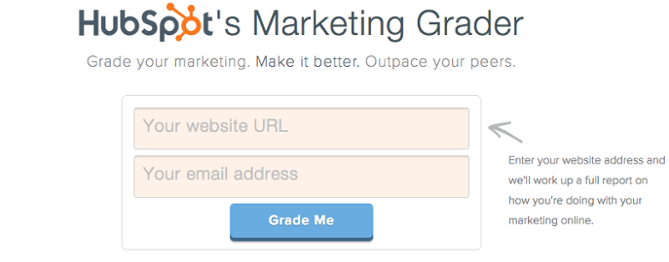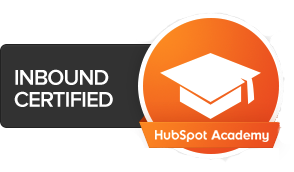Like most social enterprise marketing strategies, online customer acquisition strategies – and the marketing funnel – ties closely to the setup used by any other for-profit company.
The key difference? Messaging. But that’s not what we’ll be talking about in this post.
Today, let’s take a look at the key elements to the marketing funnel social enterprises should be using to increase customer acquisition, the potential blockages in ineffective funnels, and how to optimize yours.
What is a marketing funnel?
Acquiring customers involves using a variety of marketing and sales steps with the goal of converting prospects into customers. This process is often thought of as a funnel (hence the name), but can also be displayed as a step-by-step system. Essentially, you broadly bring prospects in at the top of the funnel/beginning of the process, and a portion successfully convert to the next stage. By the end, you’ll have converted a small percentage of the original prospects into customers.
HubSpot – a mecca of online marketing funnel expertise – highlights this process in one of the most simple and approachable ways I’ve seen.

A more traditional funnel might only encompass the three middle steps – attract, convert, and close. In the above diagram, HubSpot rightly includes the planning stage, as well as the action organizations must take after acquiring the customer: delighting them.
No matter how large or successful your business is, you will have at least one blockage point in your customer acquisition funnel. This is the point where you are not happy with the conversion rates from one step to the next.
Let’s take a closer look at each of these steps, the common blockages social enterprises face, and the solutions to removing them.
1. Plan
Without goals and without a plan, you’re not going to get far. If you don’t know where you’re going, how do you know when you get there?
Yet, it’s not uncommon for brands to launch marketing campaigns without a clear goal, or plan in place for how they’ll meet that goal. As tempting as it may be, don’t skip this. It’ll cost you more time and money in the long run.
2. Attract
For online marketing, this is all about how you’re attracting general web users to your website. But not just any users though, the right ones.
Strategies to ‘attract’ are going to come in the form of either ‘organic’ or ‘paid’.
Organic traffic involves creating content and getting that content visibility in search engines, across social media, and your own email marketing. Paid traffic is using paid advertising platforms or advertising relationships to bring in new visitors. I recommend including both in your strategies, with a balance matching your budget and specific goals.
Common Blockages in the 'Attract' Stage
Poor Prioritization: A very common misconception amongst first-time entrepreneurs is “if you build it, they will come”. The average online buyer is suffering from severe information overload, though. Their most scarce and valuable commodity is rapidly becoming their time and attention. Getting their attention by simply creating a website and hoping for viral spread will not work.
You MUST invest (whether financially or otherwise) in the channels you’re using to attract potential customers. Identify a handful that you believe should be prioritized, and commit to them.
Unclear Messaging: If, despite significant efforts, you’re still unable to attract, then reconsider your message. What is the specific pain point your product or service solves? Is that problem, and your solution, being clearly and effectively represented in your efforts to attract?
3. Convert
Once you’ve attracted website visitors, the next step is to convert those visitors into leads. This means getting them to provide you with contact information, such as an email address.
In order for your visitors to offer up their information willingly, you need to offer them something valuable in return. That value usually comes in the form of content, like eBooks or cheat sheets – whatever information would be interesting and valuable to each of your target customers.
You may also hear this type of content referred to as “locked content” or “lead magnets”.

Common Blockages in the 'Convert' Stage
Low Credibility: You’ve got visitors to your website and are promising them something valuable in exchange for some contact information. But why should they believe you’ll keep your promise? There’s a lot of spam and poor content out there – web users are suspicious.
Quotes, testimonials, metrics, case studies are just a few tactics that can boost your credibility and ensure your brand is perceived as trustworthy.
Quality of Offer: I don’t just give my contact info out to anyone. Do you? Maybe the “something valuable” you’re offering isn’t that valuable to the visitor at all, or maybe you aren’t really solving the problem they need help with. Your offer, and messaging of it, needs to be clear, actionable, and irresistible.
4. Close
You’ve attracted the right folks and they’ve confirmed their interest in you and your brand. Now, it’s time to turn those leads into customers.
Depending on your business, this piece of the process may be getting on the phone, sending the leads into an automation, or passing them onto a different team members. Similarly, for some businesses this might take a week, for others a year.
Common Blockages in the 'Close' Stage
Market Fit: Quite simply, the product or service you’re selling – in its current format – may not be the solution your potential customers are looking for. Confirm your market fit through competitor analysis, focus groups, or by collecting feedback from existing customers or leads.
Value Proposition: You’ve got a great solution, but your potential customers don’t see the value – yet. Often, this is due to how you’re positioning the product and how you’re marketing it. Sometimes, you’ll need to reconsider your pricing, too.
5. Delight
Want your customers to do your marketing for you? This is how to do it. Delight them, and they refer you time and time again.
A mentor of mine once told me that his first objective with a new customer was to “wow” them within 48 hours of a contract being signed. Of course, that time-frame isn’t possible for every business, but the concept is relevant to all of us. “Wow” a customer early on, and you’ve won their loyalty for a long time to come.
The importance of Metrics
If you don’t measure your funnel’s performance, it’s almost impossible to understand how to improve it. Understanding from a data standpoint what works, and what doesn’t, is the only true way to scale your funnel effectively.
In order to understand where your blockages are, you’ll want to measure the number of prospects going into each stage and the conversion rate to the next stage. You will also care about the overall conversion rate of prospects from the top of funnel to close, and the value each close brings to your business.
For example, you may be bringing 100 visitors to your website each day, with 2 of these converting into leads and then 1 of those leads becoming a customer. A 50% lead conversion rate is great (1 customer every 2 leads), but a 2% conversion rate of website visitors into leads (2 leads every 100 website visitors) shows room for improvement. The blockage in this example exists at the ‘convert’ stage. Only once that is understood can action be taken to resolve it.
In an ideal world, the transitions will be so natural, customers won’t even consciously decide to progress – they’ll just do it. But of course, 100% conversion rates are only a dream!
Take some time using the above methods to assess your existing acquisition funnel. If you don’t have one, think about how you can fit your product or service into this model of online customer acquisition.
Learn how to do GREAT marketing...without being a "marketer" in our FREE 7-step strategy course delivered straight to your inbox.
We promise we don't spam, we don't email often, and we'll NEVER share your info with anyone else.



